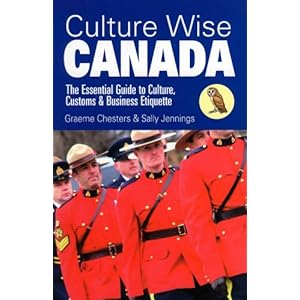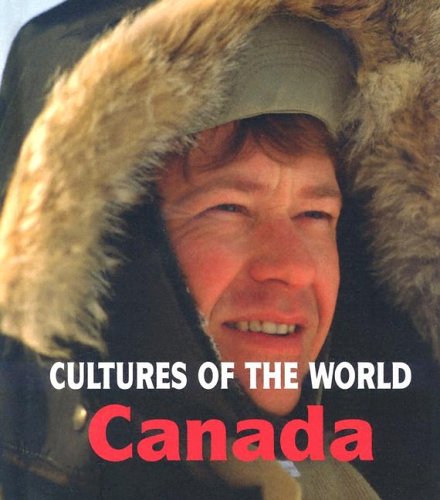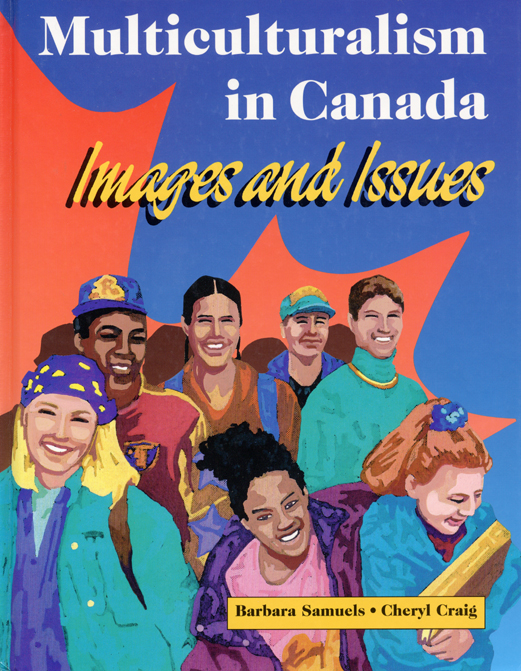After I created an article on "Study In Canada" now I'll make an article entitled "Culture In Canda". In this article I will discuss about the culture in canada like culture wise canada, culture shock, and global culture in canada. you also can see and know more knowledgeable about the culture in canada at the website CESI (Canada Educational Services International) Happy reading to increase your knowledge about canada and enjoy reading:)
 Canadian culture has historically been influenced by British, French, and Aboriginal cultures and traditions. It has also been influenced by American culture because of its proximity and migration between the two countries. American media and entertainment are popular, if not dominant, in English Canada; conversely, many Canadian cultural products and entertainers are successful in the U.S. and worldwide. Many cultural products are marketed toward a unified "North American" or global market.
Canadian culture has historically been influenced by British, French, and Aboriginal cultures and traditions. It has also been influenced by American culture because of its proximity and migration between the two countries. American media and entertainment are popular, if not dominant, in English Canada; conversely, many Canadian cultural products and entertainers are successful in the U.S. and worldwide. Many cultural products are marketed toward a unified "North American" or global market.
The creation and preservation of distinctly Canadian culture are supported by federal government programs, laws and institutions such as the Canadian Broadcasting Corporation (CBC), the National Film Board of Canada (NFB), and the Canadian Radio-television and Telecommunications Commission (CRTC).
Culture & Lifestyle of canada:
 Canadian culture has historically been influenced by British, French, and aboriginal cultures and traditions. There are distinctive Aboriginal cultures, languages, art, and music spread across Canada.Many North American Indigenous words, inventions and games have become an everyday part of Canadian language and use. The canoe, snowshoes, the toboggan, lacrosse, tug of war, maple syrup and tobacco are examples of products, inventions and games.Some of the words include the barbecue, caribou, chipmunk, woodchuck, hammock, skunk, mahogany, hurricane and moose.Numerous areas, towns, cities and rivers of the Americas have names of Indigenous origin. The province of Saskatchewan derives its name from the Cree language name of the Saskatchewan River, "Kisiskatchewani Sipi".Canada's capital city Ottawa comes from the Algonquin language term "adawe" meaning "to trade."National Aboriginal Day recognises the cultures and contributions of Aboriginal peoples of Canada.
Canadian culture has historically been influenced by British, French, and aboriginal cultures and traditions. There are distinctive Aboriginal cultures, languages, art, and music spread across Canada.Many North American Indigenous words, inventions and games have become an everyday part of Canadian language and use. The canoe, snowshoes, the toboggan, lacrosse, tug of war, maple syrup and tobacco are examples of products, inventions and games.Some of the words include the barbecue, caribou, chipmunk, woodchuck, hammock, skunk, mahogany, hurricane and moose.Numerous areas, towns, cities and rivers of the Americas have names of Indigenous origin. The province of Saskatchewan derives its name from the Cree language name of the Saskatchewan River, "Kisiskatchewani Sipi".Canada's capital city Ottawa comes from the Algonquin language term "adawe" meaning "to trade."National Aboriginal Day recognises the cultures and contributions of Aboriginal peoples of Canada.Canadian culture has been greatly influenced by immigration from all over the world. Many Canadians value multiculturalism and see Canada as being inherently multicultural.
However, the country's culture has been heavily influenced by American culture because of its proximity and the high rate of migration between the two countries. The great majority of English-speaking immigrants to Canada between 1755 and 1815 were Americans from the Thirteen Colonies; during and immediately after the American Revolutionary War, 46,000 Americans loyal to the British crown came to Canada.Between 1785 and 1812, more Americans emigrated to Canada in response to promises of land.
American media and entertainment are popular, if not dominant, in English Canada; conversely, many Canadian cultural products and entertainers are successful in the United States and worldwide.Many cultural products are marketed toward a unified "North American" or global market. The creation and preservation of distinctly Canadian culture are supported by federal government programs, laws, and institutions such as the Canadian Broadcasting Corporation (CBC), the National Film Board of Canada, and the Canadian Radio-television and Telecommunications Commission.
American media and entertainment are popular, if not dominant, in English Canada; conversely, many Canadian cultural products and entertainers are successful in the United States and worldwide.Many cultural products are marketed toward a unified "North American" or global market. The creation and preservation of distinctly Canadian culture are supported by federal government programs, laws, and institutions such as the Canadian Broadcasting Corporation (CBC), the National Film Board of Canada, and the Canadian Radio-television and Telecommunications Commission.
Canadian visual art has been dominated by Tom Thomson - Canada's most famous painter - and by the Group of Seven. Thomson's brief career painting Canadian landscapes spanned just a decade up to his death in 1917 at age 39.The Group were painters with a nationalistic and idealistic focus, who first exhibited their distinctive works in May 1920. Though referred to as having seven members, five artists - Lawren Harris, A. Y. Jackson, Arthur Lismer, J. E. H. MacDonald, and Frederick Varley - were responsible for articulating the Group's ideas. They were joined briefly by Frank Johnston, and by commercial artist Franklin Carmichael. A. J. Casson became part of the Group in 1926. Associated with the Group was another prominent Canadian artist, Emily Carr, known for her landscapes and portrayals of the indigenous peoples of the Pacific Northwest Coast.
Canada has developed a music infrastructure and industry, with broadcasting regulated by the Canadian Radio-television and Telecommunications Commission.The Canadian music industry has produced internationally renowned composers, musicians and ensembles, such as Portia White, Guy Lombardo, Murray Adaskin, Rush, Joni Mitchell and Neil Young. Canadian winners of multiple Grammy Awards have included Celine Dion, k.d. lang, Sarah McLachlan, Alanis Morissette and Shania Twain. The Canadian Academy of Recording Arts and Sciences administers Canada's music industry awards, the Juno Awards, which commenced in 1970.
The national anthem of Canada O Canada adopted in 1980, was originally commissioned by the Lieutenant Governor of Quebec, the Honourable Théodore Robitaille, for the 1880 St. Jean-Baptiste Day ceremony.Calixa Lavallée wrote the music, which was a setting of a patriotic poem composed by the poet and judge Sir Adolphe-Basile Routhier. The text was originally only in French, before it was translated to English in 1906.
Canada has developed a music infrastructure and industry, with broadcasting regulated by the Canadian Radio-television and Telecommunications Commission.The Canadian music industry has produced internationally renowned composers, musicians and ensembles, such as Portia White, Guy Lombardo, Murray Adaskin, Rush, Joni Mitchell and Neil Young. Canadian winners of multiple Grammy Awards have included Celine Dion, k.d. lang, Sarah McLachlan, Alanis Morissette and Shania Twain. The Canadian Academy of Recording Arts and Sciences administers Canada's music industry awards, the Juno Awards, which commenced in 1970.
The national anthem of Canada O Canada adopted in 1980, was originally commissioned by the Lieutenant Governor of Quebec, the Honourable Théodore Robitaille, for the 1880 St. Jean-Baptiste Day ceremony.Calixa Lavallée wrote the music, which was a setting of a patriotic poem composed by the poet and judge Sir Adolphe-Basile Routhier. The text was originally only in French, before it was translated to English in 1906.
Canada's National symbols are influenced by natural, historical, and Aboriginal sources.the use of the maple leaf as a Canadian symbol dates to the early 18th century. The maple leaf is depicted on Canada's current and previous flags, on the penny, and on the Coat of Arms.Other prominent symbols include the beaver, Canada Goose, Common Loon, the Crown, the Royal Canadian Mounted Police,and more recently, the totem pole and Inukshuk.
Canada's official national sports are hockey in the winter and lacrosse in the summer.Hockey is a national pastime and the most popular spectator sport in the country. It is also the sport most played by Canadians, with 1.65 million participants in 2004.Canada's six largest metropolitan areas-Toronto, Montreal, Vancouver, Ottawa, Calgary, and Edmonton-have franchises in the National Hockey League (NHL), and there are more Canadian players in the NHL than from all other countries combined. Other popular spectator sports include curling and football; the latter is played professionally in the Canadian Football League (CFL).Golf, baseball, skiing, soccer, volleyball, and basketball are widely played at youth and amateur levels, but professional leagues and franchises are not widespread.
Canada has hosted several high-profile international sporting events, including the 1976 Summer Olympics in Montreal, the 1988 Winter Olympics in Calgary, and the 2007 FIFA U-20 World Cup. Canada was the host nation for the 2010 Winter Olympics in Vancouver and Whistler, British Columbia.
Canada's official national sports are hockey in the winter and lacrosse in the summer.Hockey is a national pastime and the most popular spectator sport in the country. It is also the sport most played by Canadians, with 1.65 million participants in 2004.Canada's six largest metropolitan areas-Toronto, Montreal, Vancouver, Ottawa, Calgary, and Edmonton-have franchises in the National Hockey League (NHL), and there are more Canadian players in the NHL than from all other countries combined. Other popular spectator sports include curling and football; the latter is played professionally in the Canadian Football League (CFL).Golf, baseball, skiing, soccer, volleyball, and basketball are widely played at youth and amateur levels, but professional leagues and franchises are not widespread.
Canada has hosted several high-profile international sporting events, including the 1976 Summer Olympics in Montreal, the 1988 Winter Olympics in Calgary, and the 2007 FIFA U-20 World Cup. Canada was the host nation for the 2010 Winter Olympics in Vancouver and Whistler, British Columbia.

And this is a video about culture in canada :


Nice artikel, culture shock is very fantastis :)
BalasHapuswah... bantu banget nih, gue kedubes kanada. thanks ya gung...
BalasHapushaha sama sama ya :)
BalasHapus